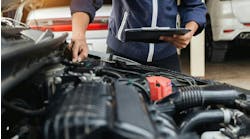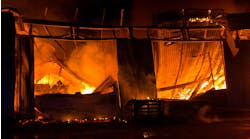Forgive me while I tell the following bad joke (there's a point here).
A rather portly man walks into a restaurant, takes a seat and gives the waiter the following order: A thick 16-ounce porterhouse steak, a baked potato with lots of butter and sour cream, gravy, onion rings, rolls with more butter and chocolate cake with ice cream for dessert.
"Anything to drink?" asks the waiter.
The man replies, "Yes. Get me a diet cola. And make sure it's diet because my doctor told me I need to watch my weight."
OK, you've probably heard something similar. As ridiculous as this joke is, apparently a number of shops are taking a similar approach when it comes to adopting lean processing.
Going lean, for many repairers (according to some of the gurus of lean theory I've spoken with, Mike Anderson, for example), can mean anything from making one of two waste-cutting steps at their shops or turning lean into a short-term process with the goal of simply bumping up profits in the near future.
While I think we should applaud any time a shop cuts waste and streamlines its processes, we need to be careful to speak accurately about our operations. The fact is, either you are lean or you aren't. Either you're fully adopting lean methodology throughout your business and using it to transform your operation or you're simply streamling and not garnering the full benefits of lean.
Why make this point? Right now, as an industry, many of us are facing unprecedented challenges. Work availability is shrinking as more vehicles than ever are totaled out and sent to salvage auctions. With the economy still deep in a recession, consumers are cancelling insurance or raising their deductibles and putting off collision work as long as their vehicles are still drivable. Training and equipment needs continue to grow.
Just when you might think the insurance industry is squeezing you beyond what your business can tolerate, get ready for more. Insurers make their money in two areas: investments and from customers reupping their policies. With Wall Street still weak and insurers working hard to poach each other's policyholders, profits are going to be hard to come by, which means insurers will be looking to cut costs, as in the costs they're willing to pay for collision repairs.
Surviving in such a severe environment means taking severe steps. It means truly transforming your business, if necessary, by investing, without compromise, in some methodology like lean processing. That involves making and maintaining the most difficult change of all – a change in your business culture, a fundamental change in the way you and your employees think about your work.
While all this may seem daunting, realize that others have made this leap. This month, John Yoswick examines the trials, tribulations and rewards of shops that have transformed themselves in his article "Lean: The Big Picture" (page 68). We also have a full range of lean sources and info at www.ABRN.com.
If you're interested in other methodologies, it's time we introduced you to Theory of Constraints (TOC), which repairer John Fagan's outlines in his article "Break Free from Constraints" on page 56. TOC involves lean principles while also focusing on growth. Fagan has used TOC to turn around a once failing shop into both a model of efficiency and a financial powerhouse. Fagan believes you could do the same, with the proper investment.
That sounds like a much better plan than simply tipping back another diet soda.
Contact info: [email protected]


